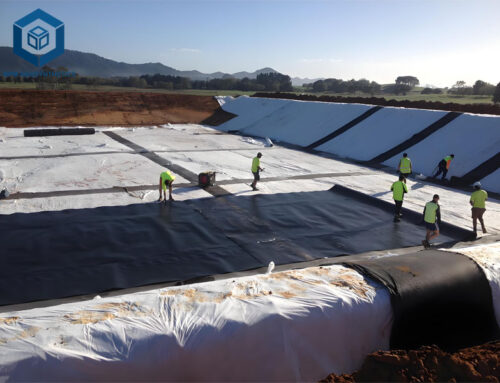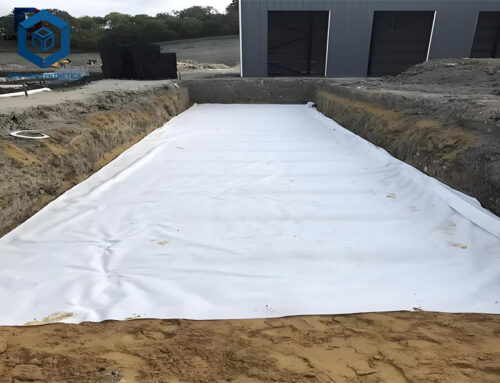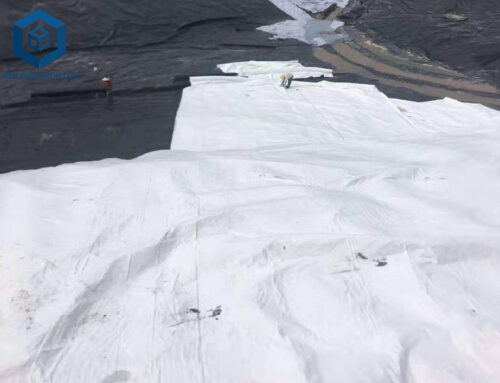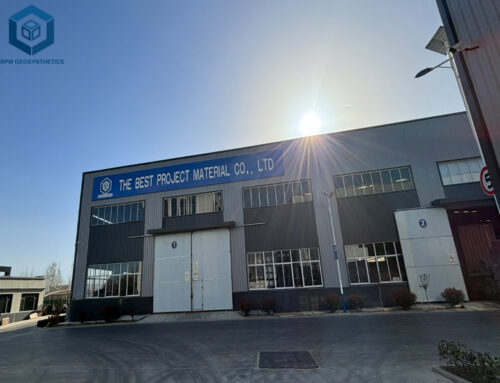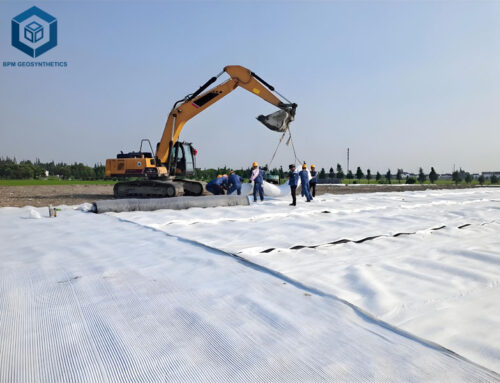Non woven Geotextile Fabric is made from 100% virgin staple polypropylene fibers that are tangled and interlocked with each other by needle-punching process. It is the kind of nonwoven geotextile fabric which is robust, durable, permeable and resist to deformation. BPM Geotextile short fiber nonwoven geotextile fabric is widely used to increase ground support and soil stabilization in a given location, it has the characteristics of high tensile strength, high elongation rate, excellent UV stabilization, excellent filtration and good abrasion resistance, etc. Everyone knows that filtration, separation, protection, drainage applications in civil environmental engineering and construction projects, but it also has its own disadvantages. This article will briefly elaborate to you.
1. What Is Non Woven Geotextile Fabric?
Non-woven geotextile fabric is typically made from polypropylene or polyester fibers. These fibers are processed using methods like weaving, needle-punching, or heat-bonding. The short fiber needle-punched geotextile fabric is crafted from 100% virgin staple polypropylene fibers, which are interlocked and tangled via the needle-punching process. This type of non-woven geotextile fabric is robust, durable, permeable, and resistant to deformation. BPM’s short fiber nonwoven geotextile fabric enhances ground support and soil stabilization in various locations. It features high tensile strength, a high elongation rate, excellent UV stabilization, superior filtration, and good abrasion resistance. It’s extensively used for filtration, separation, protection, and drainage in civil environmental engineering and construction projects.
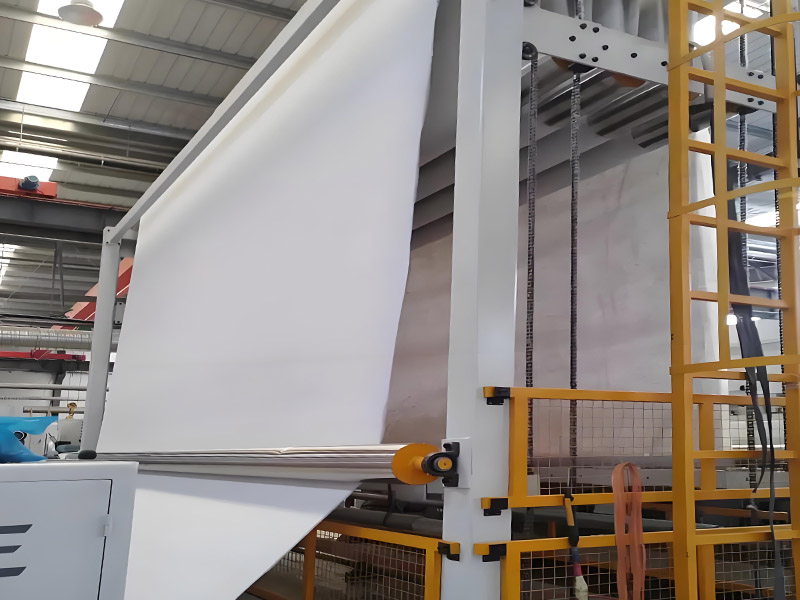
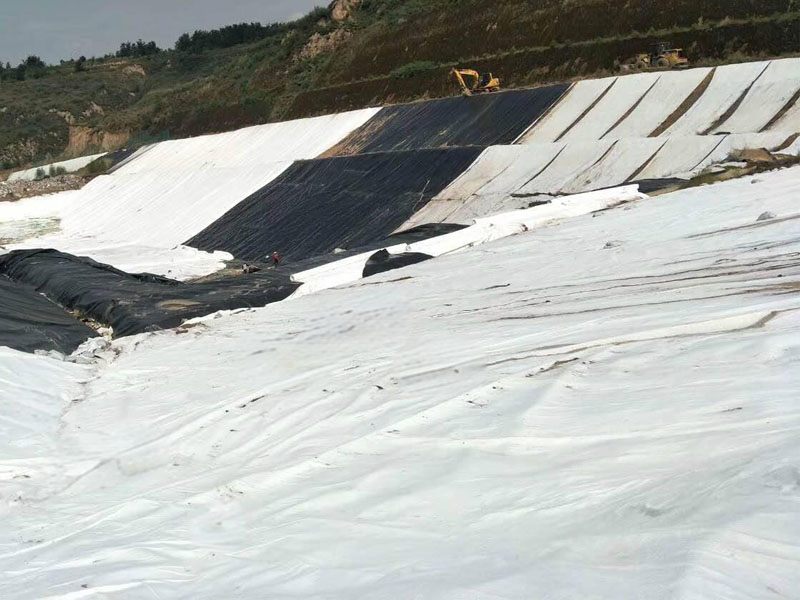
2. What Are The Advantages Of Non Woven Geotextile Fabric?
Non-woven geotextile fabric offers several advantages, making it a popular choice in civil engineering and environmental projects:
- Permeability: Allows water to pass through while retaining soil and other particulate matter, ideal for drainage and filtration applications.
- Durability: Strong and resistant to degradation from UV light, chemicals, and microorganisms, ensuring long-term performance.
- Flexibility: Can conform to irregular surfaces, suitable for complex terrains and construction projects.
- Ease of Installation: Lightweight and flexible, facilitating easy handling, transportation, and installation.
- Cost-Effectiveness: Often more affordable than woven geotextiles due to its production process and versatility.
- Strength: Provides high tensile strength and good resistance to deformation, enhancing the stability of structures.
- Environmental Benefits: Minimizes environmental impact by reducing the need for natural materials and limiting disturbances during installation.
- Customizable: Can be tailored to meet specific project requirements, ensuring optimal performance in various applications.
3. What Are The Disadvantages Of Non Woven Geotextile Fabric?
While non-woven geotextile fabrics offer numerous advantages, they also have some disadvantages that may limit their applicability in certain situations:
- Lower Tensile Strength: Compared to woven geotextiles, non-woven fabrics generally have lower tensile strength and tear resistance, which can be a limitation in applications requiring high mechanical stress.
- Susceptibility to Punctures: Non-woven geotextiles are more prone to punctures and abrasions, especially in environments with sharp or rough materials. This makes them less suitable for high-abrasion areas.
- Variable Quality: The quality of non-woven geotextiles can vary significantly based on the manufacturing process and materials used, leading to inconsistencies in performance.
- Chemical Sensitivity: Some types of non-woven geotextiles may not be as chemically resistant as woven versions, potentially limiting their use in environments with aggressive chemicals.
- Limited UV Stability: Although many non-woven geotextiles are treated for UV resistance, they may still degrade faster under prolonged exposure to sunlight compared to woven fabrics, necessitating additional protective measures.
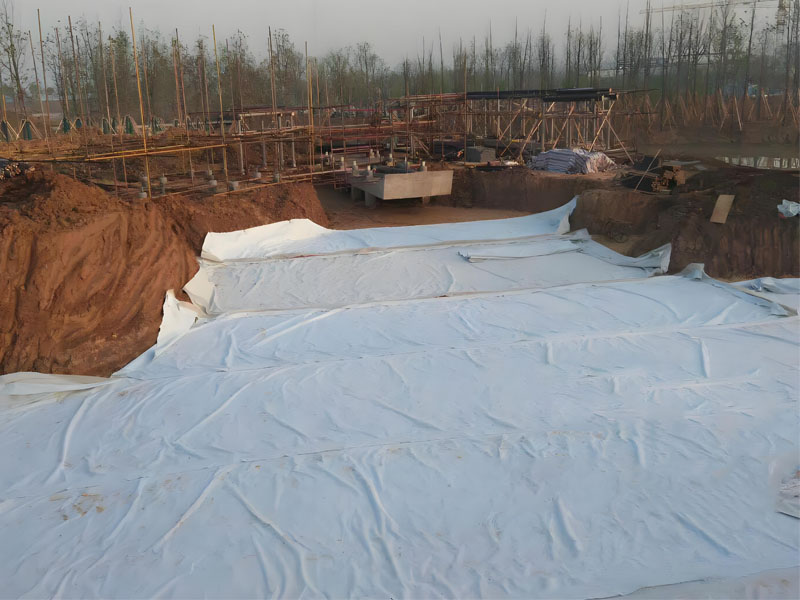
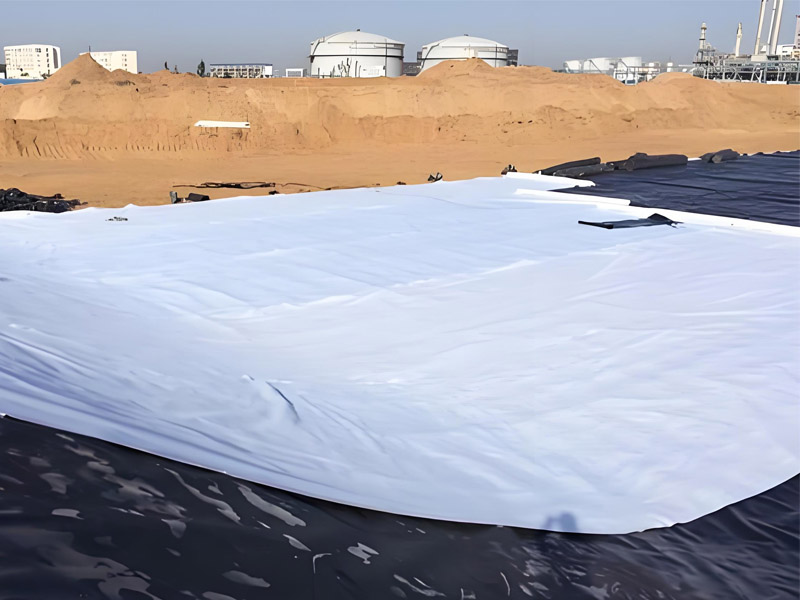
4. Does Non woven Geotextile Fabric Really Work?
Yes, non-woven geotextile fabric really works and is widely used in various civil engineering and construction applications. Here’s how it functions effectively:
4.1 Permeability and Filtration
Non-woven geotextiles let water through but hold back soil particles. This helps control groundwater flow and prevent erosion. They’re often used in landfill liners to separate waste from leachate and soil.
4.2 Soil Stabilization and Erosion Control
Non-woven geotextiles stabilize soil and prevent erosion on slopes. They withstand environmental stresses like rain and wind. This helps maintain soil integrity. They’re used in road construction to prevent washout during heavy rains.
4.3 Durability
Non-woven geotextiles are lightweight but durable. They resist UV light, chemicals, and microorganisms. This ensures longevity outdoors. They’re used in coastal defense against tides and waves.
4.4 Flexibility and Conformability
They can easily conform to irregular surfaces, making them suitable for a range of terrains and project types, from roadways to railways. This property is crucial in landscaping projects where the fabric needs to adapt to varied topographies.
4.5 Cost-Effective Solution
Non-woven geotextiles are cheaper to produce than woven versions. They offer a cost-effective solution without compromising quality. This makes them ideal for large projects like highway construction with budget constraints.
4.6 Versatility
These fabrics are versatile and can be used in multiple applications, including filtration, separation, protection, and drainage. They are essential components in modern infrastructure and environmental management projects. For example, they are used in agricultural applications to improve soil quality by separating different soil layers and enhancing root development.
5. Summary
Despite the numerous advantages of non-woven geotextile fabrics, it’s crucial to recognize their limitations. Non-woven geotextiles may be prone to punctures and abrasions in harsh environments, compromising effectiveness. Their filtration might not always meet high standards for certain applications, needing extra layers. Though cost-effective, they can still strain project budgets, especially with maintenance and replacements. Their tensile strength is often lower than woven versions in high-stress scenarios. Environmental concerns about synthetic production and disposal are significant. Despite these drawbacks, careful planning and correct use can mitigate many issues, keeping non-woven geotextiles valuable in engineering projects.

